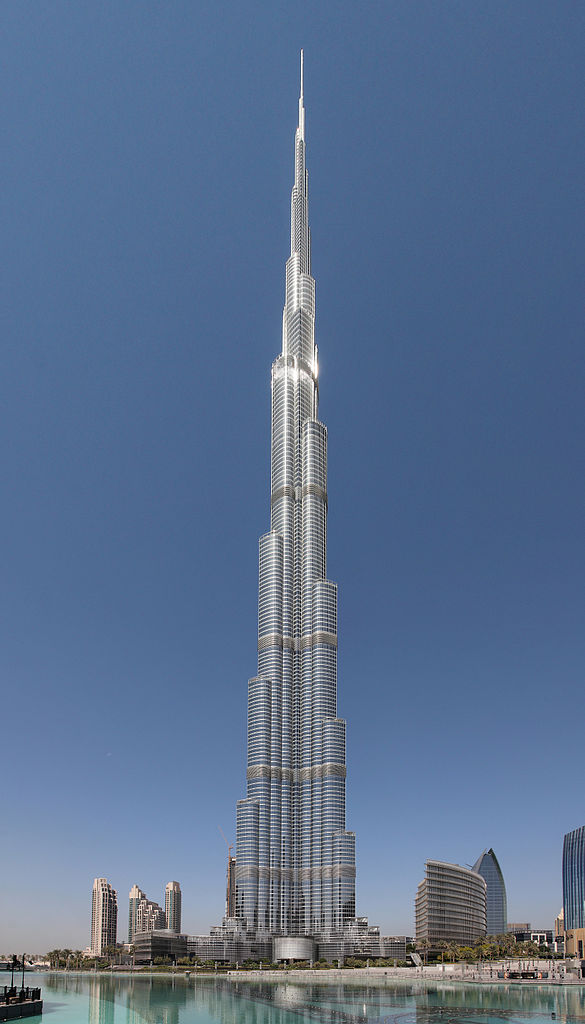How do you get Power into Your Lunar Base? With a Tower of Concrete Several Kilometers High
By Scott Alan Johnston
It sounds like science fiction, but building an enormous tower several kilometers high on the Lunar surface may be the best way to harness solar energy for long-term Lunar exploration. Such towers would raise solar panels above obstructing geological features on the Lunar surface, and expand the surface area available for power generation.
A successful future Moon-base of any size is going to require two key resources: water and power. Ever since evidence of frozen water ice was discovered in the depths of permanently shadowed craters near the Moon’s South Pole, the polar region has become NASA’s primary target for future Moon landings. Water can be used for drinking, of course, and growing plants, but also as rocket fuel, or separated out at the molecular level to make breathable oxygen. But while the Moon’s water is found deep in the crater basins, power generation will likely come from high up, above the crater rims, where ‘peaks of eternal light’ are known to exist. These peaks almost never experience shadow, and would be ideal locations to place solar cells to power water-extraction activities on the Moon.
The ‘peaks of eternal light’ are small, however, and to make the most of them, it might make sense to build on them vertically – dramatically increasing the useable surface area for unobstructed solar power generation.
While it will be many decades before any such construction is attempted in earnest, researchers at Harvard University have already begun working out the possibilities and constraints of such a project. They released a preprint paper on ArXiv at the end of February which explores the physics and material science that would govern the construction of such enormous Lunar towers.

On Earth, the tallest building ever built, the Burj Khalifa, stands at 828 meters tall. On the Moon, it’s possible to build much higher than that, because the Lunar environment offers three significant advantages.
First, the Moon’s gravity is only 1/6th of Earth’s, meaning buildings can hold up under their own weight at much greater heights. Second, the Lunar environment lacks an atmosphere, which means that builders on the Moon won’t have to account for the strain of high winds like they do on Earth. And finally, the Moon’s quiet seismic environment means that Lunar tower builders will not have to worry about the effects of Earthquakes, or rather, Moonquakes.
Taking these parameters into account, the researchers were able to calculate that a minimum wall thickness of 20 cm is required to safely construct a concrete tower up to several kilometers high. Building higher is possible, but the cost and amount of concrete required increases dramatically beyond two kilometers.

The researchers chose concrete as a building material because it can be made out of Lunar soil (regolith) fairly easily. The cost of transporting steel beams (for example) from Earth would be prohibitive, so being able to construct the towers from Lunar resources is essential. The researchers also measured the compressive strain of the concrete’s weight, as well as its resistance to buckling, to determine how tall such a structure might feasibly be built.
While towers up to 17 km might be theoretically possible, the team concluded that “the mass and volume of regolith that needs to be processed into concrete in a reasonable time is quite likely to be the limiting factor for some time. If we require a construction time of 1 year, then a 2 km tower would have to process 11 mt/day. A 1 km tower would require 80% lower rates. These seem like plausible numbers for a decade or two from now.”
So, towering Lunar skyscrapers are not only possible, but may just be the most practical solution for power generation on the Moon in the long term. The day when a Lunar building surpasses the height of the Burj Khalifa is still a long way off, but with the Artemis program planning to return to the Moon this decade, the foundations of such a project may be laid in the not too distant future.
Learn more: Sephora Ruppert, Amia Ross, Joost Vlassak, Martin Elvis, “Towers on the Moon: 1. Concrete.” ArXiv Preprint.
Feature Image: Earthrise, taken by the crew of Apollo 8. Credit: NASA.
The post How do you get Power into Your Lunar Base? With a Tower of Concrete Several Kilometers High appeared first on Universe Today.

March 10, 2021 at 07:00AM
via Universe Today read more...

Post a Comment